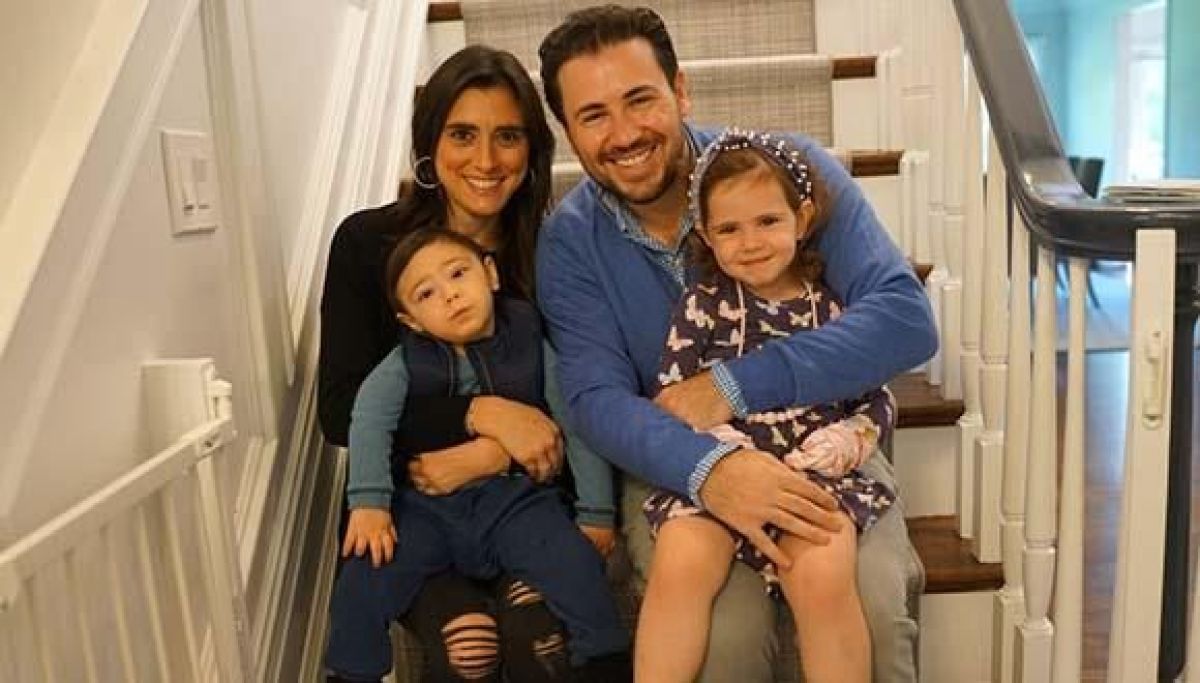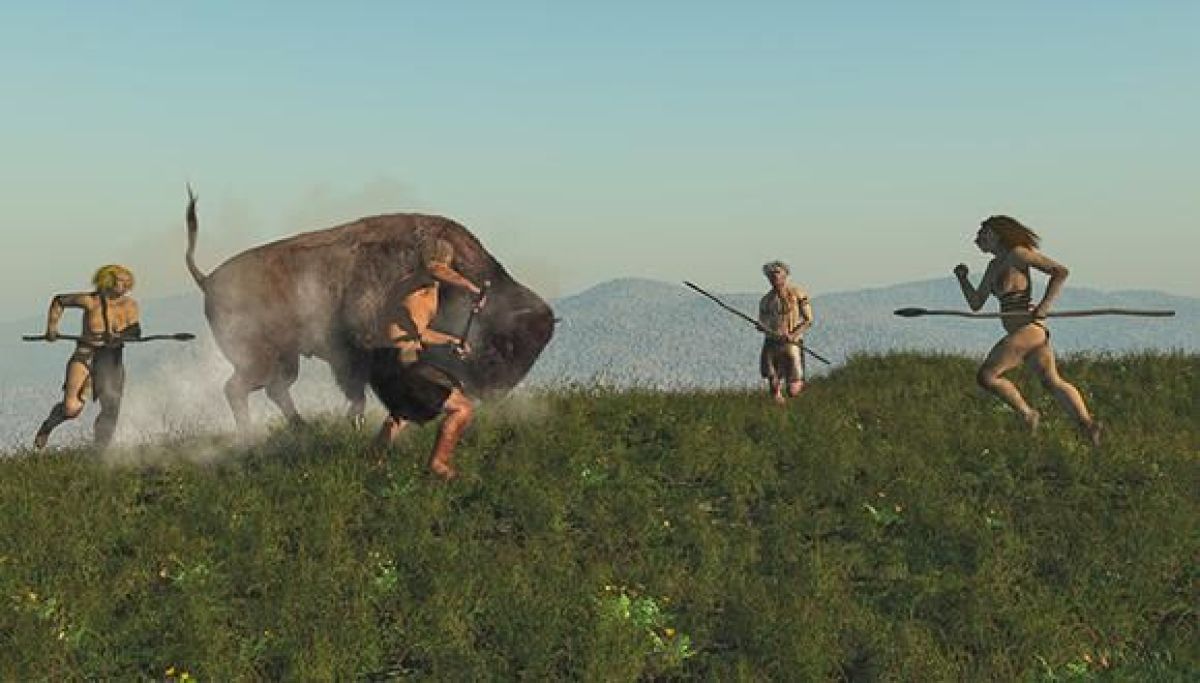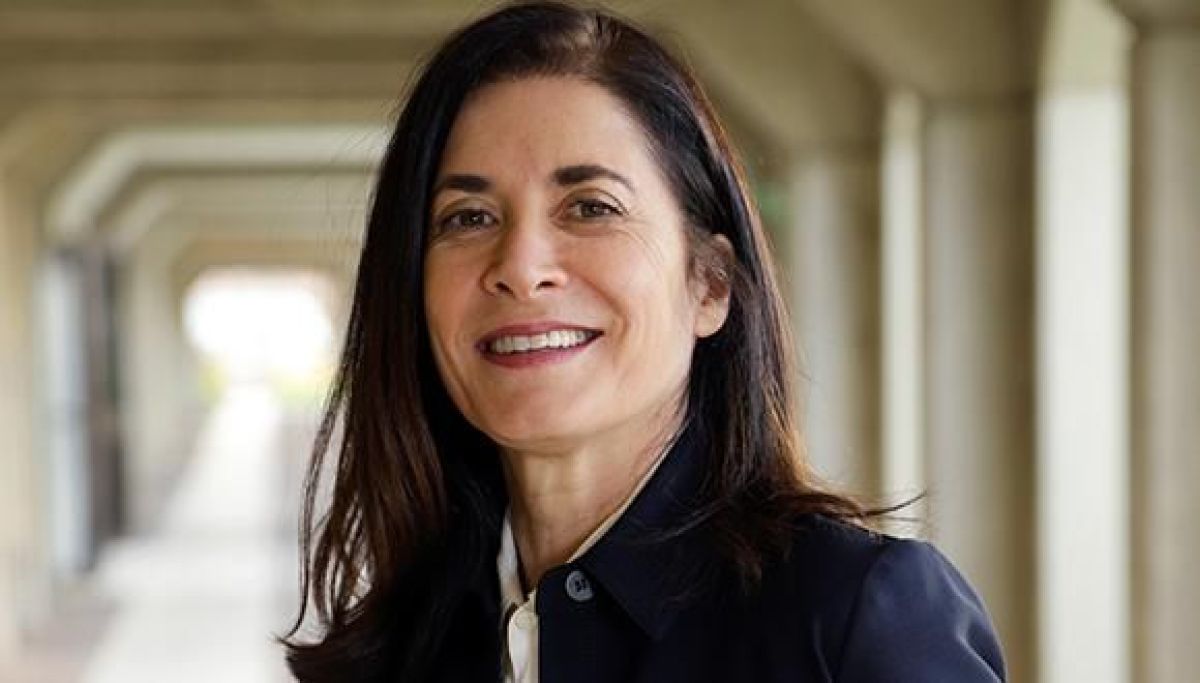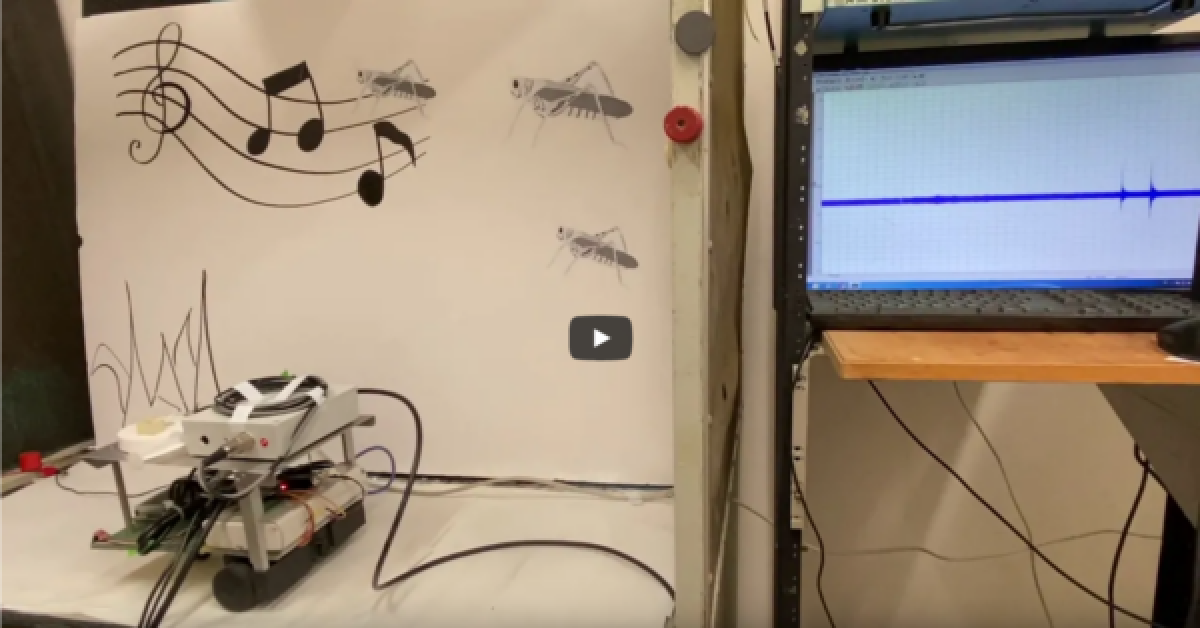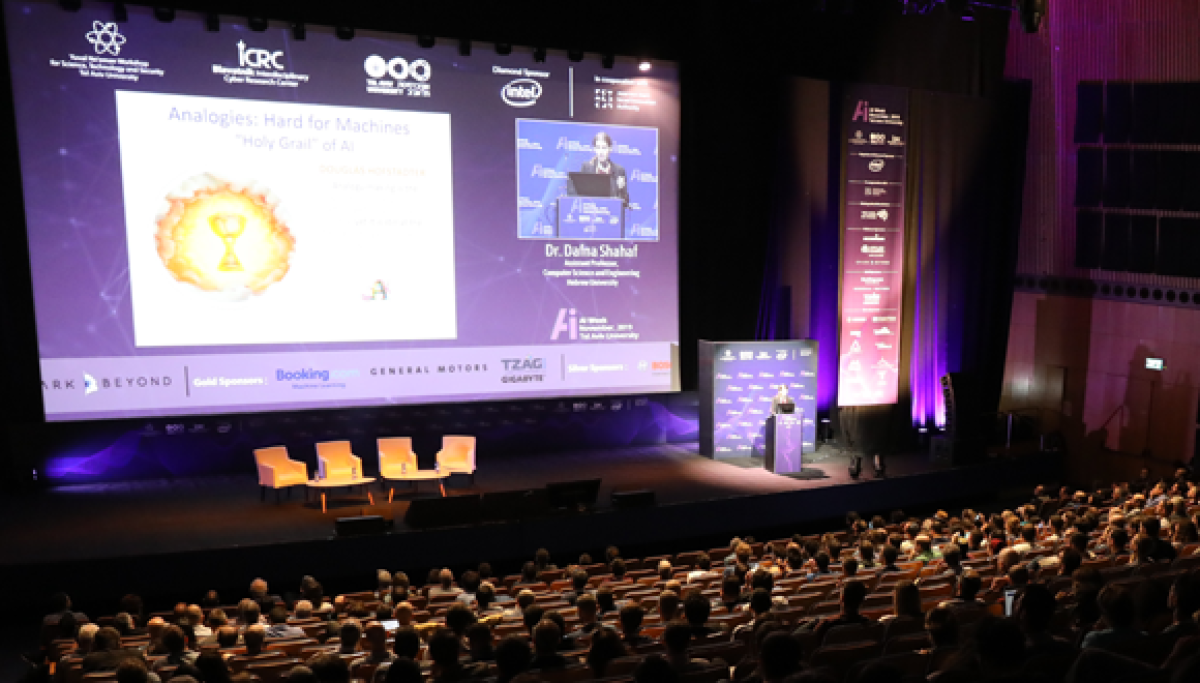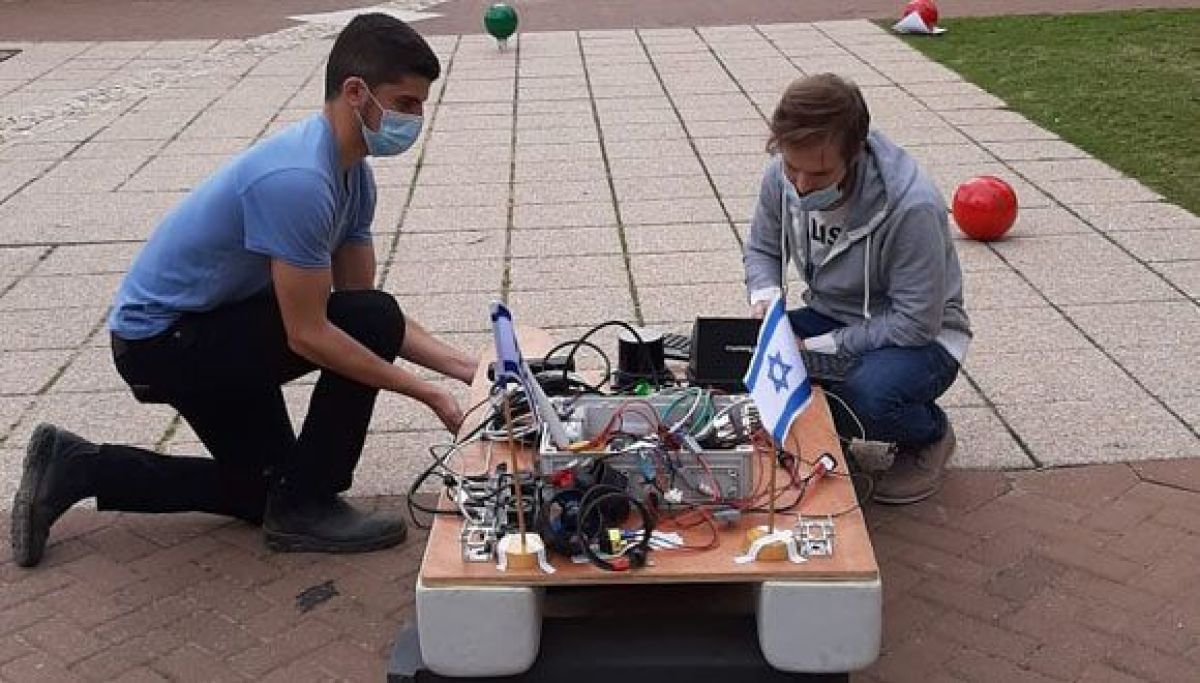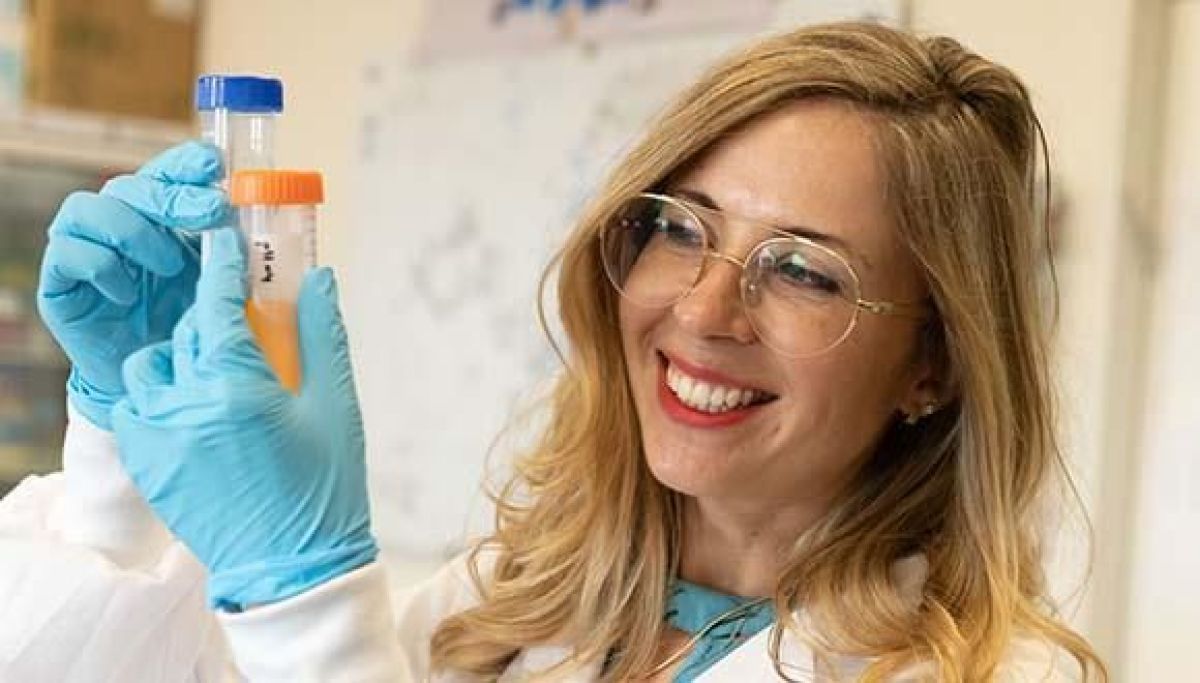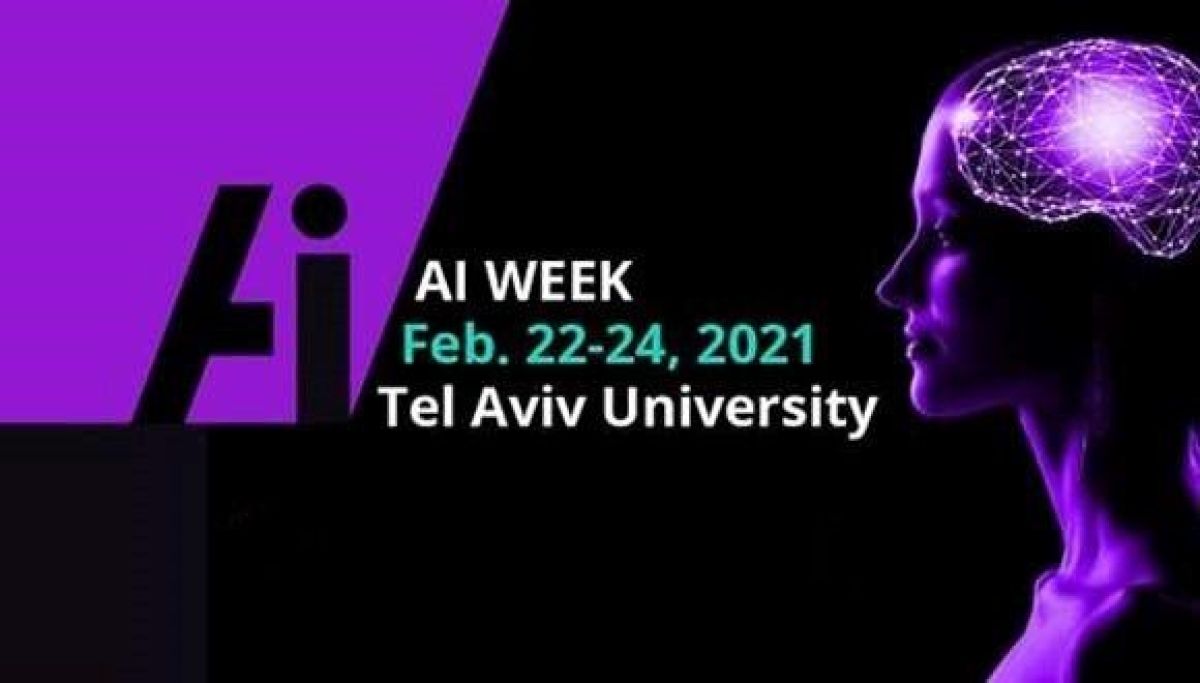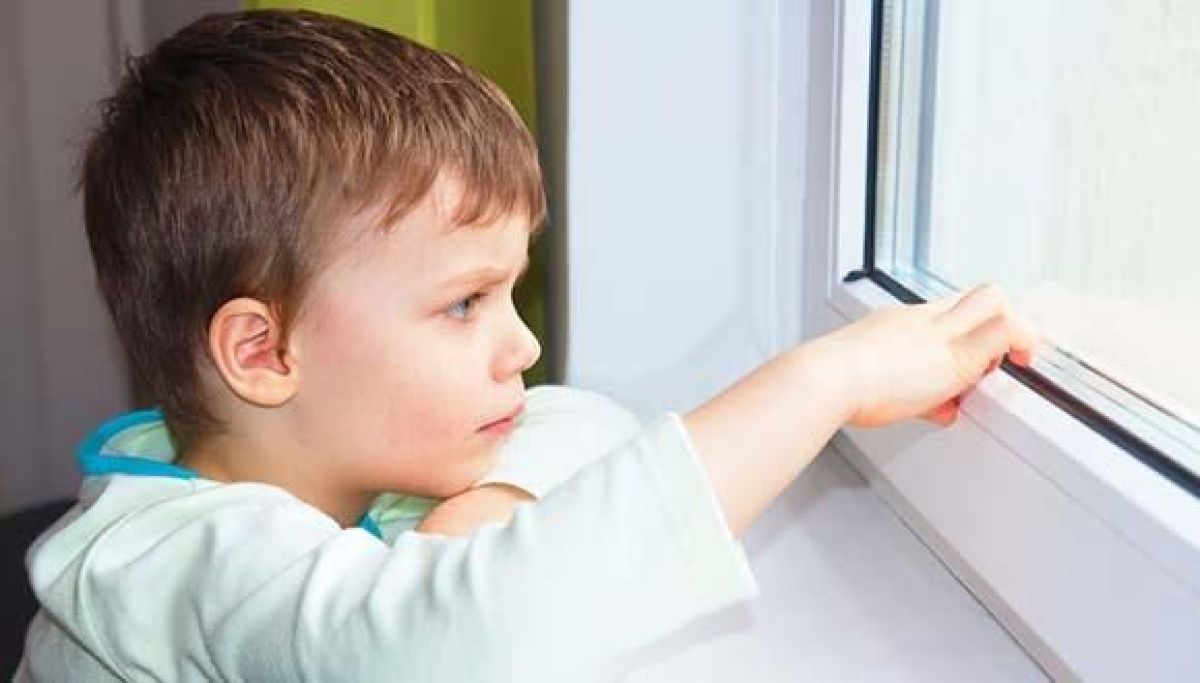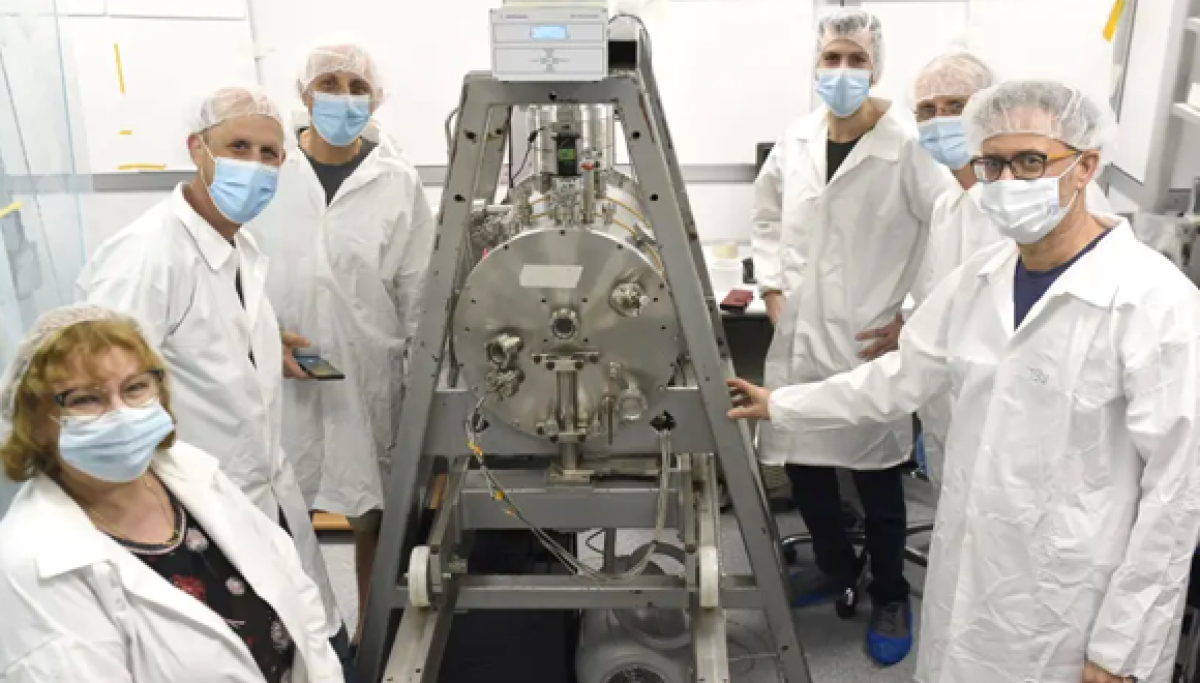When Size Does Matter…
TAU study suggests the extinction of large animals led to increased volume of the human brain.
Hunting Smarter, Not Harder
Comparing the size of animals found in archaeological cultures, representing different species of humans in east Africa, southern Europe and Israel, the researchers found that in all cases there was a significant decline in the prevalence of animals weighing over 200kg, coupled with an increase in the volume of the human brain. According to the researchers, the decrease in the size of wild animals and the need to hunt small, swift animals forced humans to display cunning and boldness – an evolutionary process that demanded increased volume of the human brain – which actually grew from 650cc to 1,500cc – and later led to the development of language enabling the exchange of information about where prey could be found. “We correlate the increase in human brain volume with the need to become smarter hunters,” explains Dr. Ben-Dor. For example, the need to hunt dozens of gazelles instead of one elephant generated prolonged evolutionary pressure on the brain functions of humans, who were now using up much more energy in both movement and thought processes. Hunting small animals, that are constantly threatened by predators and therefore very quick to take flight, requires a physiology adapted to the chase as well as more sophisticated hunting tools. Cognitive activity also rises as fast tracking requires fast decision-making, based on phenomenal acquaintance with the animals’ behavior – information that needs to be stored in a larger memory.” The theory claims that all means served one end: body energy conservation.Getting Comfortable
“The evolutionary adaptation of humans was very successful,” says Dr. Ben-Dor. “As the size of animals continued to decrease, the invention of the bow and arrow and domestication of dogs enabled more efficient hunting of medium-sized and small animals – until these populations also dwindled. Toward the end of the Stone Age, as animals became even smaller, humans had to put more energy into hunting than they were able to get back. Indeed, this is when the Agricultural Revolution occurred, involving the domestication of both animals and plants. As humans moved into permanent settlements and became farmers, their brain size decreased to its current volume of 1300-1400cc. This happened because, with domesticated plants and animals that don’t take flight, there was no more need for the allocation of outstanding cognitive abilities to the task of hunting.” Prof. Barkai adds: “It must be understood that our perspective is not deterministic. Humans brought this trouble upon themselves. By focusing on hunting the largest animals, they caused extinctions. Wherever humans appeared – whether homo erectus or homo sapiens, we see, sooner or later, mass extinction of large animals. Dependence on large animals had its price. Humans undercut their own livelihood. But while other species, like our cousins the Neanderthals, became extinct when their large prey disappeared, homo sapiens decided to start over again, this time relying on agriculture.” To date, no unifying explanation has been proposed for this major phenomenon in human prehistory. The novel theory was published in Quaternary Journal.Dafna Meitar-Nechmad Tapped as Chair of TAU’s Board of Governors
A triple alumna and long-time benefactor of TAU, she will be first woman in role.
Last Wednesday, Tel Aviv University’s Search Committee unanimously recommended the appointment of Dafna Meitar-Nechmad as the next Chair of the TAU Board of Governors.
After serving for three years as Co-Chair of the TAU Global Campaign, Meitar-Nechmad will replace Prof. Jacob A. Frenkel, who will be completing two four-year terms as Chair of the Board of Governors at the next Board of Governors meeting. Her appointment is subject to the Board of Governors’ ratification.
This new appointment follows a series of eleven women appointed to leading positions at TAU over the past year, including VP for International Academic Relations, and the Deans of the Faculties of Exact Sciences, Humanities and Innovative Learning.
Meitar-Nechmad is an alumna of TAU and former partner in the Meitar Law Offices. No longer a practicing lawyer, she is a social investor with extensive philanthropic experience. Among her many public roles, she serves on the Boards of JFN – Jewish Funders Network and the Metropolitan Opera of New York, and heads the Zvi and Ofra Meitar Family Fund, which supports a wide range of cultural and educational organizations and projects both in Israel and overseas, with TAU as its major beneficiary. Meitar-Nechmad and her family founded the Zvi Meitar Center for Advanced Legal Studies at TAU’s Buchmann Faculty of Law. In addition, Meitar-Nechmad is a founding member of the Institute for Law and Philanthropy, also at TAU’s Faculty of Law, which researches and promotes philanthropy in Israel, aiming to advance justice and equality in Israeli society and serves on its Management Committees. She is also a member of Committed to Give, an initiative for promoting philanthropy in Israel.
The Search Committee was headed by Prof. Itamar Rabinovich, former President of Tel Aviv University. In its recommendation, the committee members noted that they had been greatly impressed by Meitar-Nechmad’s leadership capabilities, her record as a leader of TAU’s Global Campaign, her extensive experience in the world of philanthropy and fundraising, and her commitment and dedication to the advancement of Tel Aviv University.
TAU’s Board of Governors holds supervisory and control functions and is mandated to help the University raise funds for further development.
Dafna Meitar-Nechmad thanked the Search Committee for recommending her appointment and said: “As a woman, a social investor and an alumna of TAU, it will be a great honor and privilege for me to head its Board of Governors. The past decade has seen substantial development at TAU, in research, education and contribution to the community, and I am certain that together we can keep up this momentum, expand the sources of funding, and open TAU’s gates to new target populations from both Israel and abroad.”
TAU President Prof. Ariel Porat congratulated Dafna Meitar-Nechmad and said: “I am very happy that the Search Committee recommended Dafna Meitar-Nechmad for such an important role at our University. Dafna has a great deal of experience in social and philanthropic activities and I have no doubt that with her support we will be able to continue the advancement of TAU’s excellence in many areas. Having seen Dafna’s activities successfully benefit TAU, and recognizing her social commitment and inspiring personality, I look forward to working together for the further consolidation of TAU’s academic, social and economic standing and its contribution to society.”
Robot “Hears” through the Ear of a Locust
TAU researchers open the door to sensory integrations between robots and insects
Tel Aviv University researchers have opened the door to sensory integrations between robots and insects: for the first time, the ear of a dead locust was connected to a robot that receives the ear’s electrical signals and responds accordingly. The result is extraordinary: When the researchers clap once, the locust’s ear hears the sound and the robot moves forward; when the researchers clap twice, the robot moves backwards.
In general, biological systems have a huge advantage over technological systems – both in terms of sensitivity and in terms of energy consumption. This initiative of Tel Aviv University researchers may in the future make much more cumbersome and expensive developments in the field of robotics redundant.
An Interdisciplinary Effort
The interdisciplinary study was led by Idan Fishel, a joint master student under the joint supervision of Dr. Ben M. Maoz of The Iby and Aladar Fleischman Faculty of Engineering and the Sagol School of Neuroscience, Prof. Yossi Yovel and Prof. Amir Ayali, experts from the School of Zoology and the Sagol School of Neuroscience together with Dr. Anton Sheinin, Yoni Amit, and Neta Shavil. The results of the study were published in the prestigious journal Sensors.
The researchers explain that at the beginning of the study, they sought to examine how the advantages of biological systems could be integrated into technological systems, and how the sensory organs of a dead locust could be used as sensors for a robot. “We chose the sense of hearing, because it can be easily compared to existing technologies, in contrast to the sense of smell, for example, where the challenge is much greater,” says Dr. Maoz. “Our task was to replace the robot’s electronic microphone with a dead insect’s ear, use the ear’s ability to detect the electrical signals from the environment, in this case vibrations in the air, and, using a special chip, convert the insect input to that of the robot.”
To carry out this unique and unconventional task, the interdisciplinary team (Maoz, Yovel and Ayali) first built a robot capable of responding to signals it receives from the environment. Subsequently, the researchers were able to isolate and characterize the dead locust ear and keep it functional long enough to successfully connect it to the robot. In the final stage, the team succeeded in finding a way to pick up the signals received by the locust’s ear in a way that could be received and responded to by the robot.
“Prof. Ayali’s laboratory has extensive experience working with locusts, and they have developed the skills to isolate and characterize the ear,” explains Dr. Maoz. “Prof. Yovel’s laboratory built the robot and developed code that enables the robot to respond to electrical auditory signals. And my laboratory has developed a special device – Ear-on-a-Chip – that allows the ear to be kept alive throughout the experiment by supplying oxygen and food to the organ, while allowing the electrical signals to be taken out of the locust’s ear and amplified and transmitted to the robot.
Biological systems expend negligible energy compared to electronic systems. They are miniature, and therefore also extremely economical and efficient. For the sake of comparison, a laptop consumes about 100 watts per hour, while the human brain consumes about 20 watts a day.
In addition, “Nature is much more advanced than we are, so we should use it,” urges Dr. Maoz. “The principle we have demonstrated can be used and applied to other senses, such as smell, sight and touch. For example, some animals have amazing abilities to detect explosives or drugs; the creation of a robot with a biological nose could help us preserve human life and identify criminals in a way that is not possible today. Some animals know how to detect diseases. Others can sense earthquakes. The sky is the limit.”
TAU Launches Israel’s First Center for AI and Data Science
Center to take TAU and Israel to forefront of the global artificial intelligence revolution.
Tel Aviv University launched the new, interdisciplinary Center for Artificial Intelligence and Data Science today, headed by Prof. Meir Feder of the Fleischman Faculty of Engineering.
The Center will enhance basic science in these fields, encourage cross-disciplinary research that uses the most advanced methods of artificial intelligence (AI) and data science (DS), and train a new generation of researchers and industrialists who will take Israel to the forefront of the global AI revolution in the coming years. Moreover, it will lay the groundwork for the rapidly growing field of quantum computing. The launch event took place during TAU’s annual AI Week.
Penetrating All Areas of Life
TAU President, Prof. Ariel Porat: “The establishment of the AI Center is one more step toward implementing TAU’s vision for advancing groundbreaking, interdisciplinary research that brings together the university’s finest researchers, the high-tech industry and the community. Not long ago we launched the interdisciplinary Center for Combating Pandemics and over the coming year we intend to establish more such centers, such as one for climate change and another for healthy aging. TAU’s great advantage is its enormous range of disciplines. Our new interdisciplinary centers will further extend the scope of research, combining different disciplines, from engineering and computer science through life sciences, medicine and psychology, to economics, management, humanities, arts and law.”
Prof. Meir Feder emphasized that “the AI revolution is expected to impact our way of life in every aspect, from drug development and data-based personalized medicine, to defense and security systems, financial systems, scientific discoveries, robotics, autonomous systems and social issues. In addition, it is very important to train human capital in this area, and therefore the Center will provide all TAU students with basic AI education.” According to Prof. Feder, the Center will include hundreds of researchers, and will promote collaborations among scientists all over campus. It will also foster collaborations with the defense and other industries, the public sector, and leading universities and research institutions around the world.
Prof. Feder added that next month the AI Center will launch its collaboration with Google Israel as part of the company’s “AI for Social Good” program.
Major Gen. (Ret.) Prof. Isaac Ben-Israel, Head of TAU’s Yuval Ne’eman Workshop for Science, Technology and Security and Blavatnik Interdisciplinary Cyber Research Center, and Prof. Eviatar Matania, also of Tel Aviv University, are the visionaries behind AI Week and the university-wide AI initiative.
Prof. Ben–Israel stressed that “the applications of intelligent systems have far-reaching implications for practically every area of modern life, including security, medicine, transportation, automation, retail, customer service and numerous others. Various AI and machine learning algorithms, together with the enormous increase in computational power, are already beginning to penetrate all areas of our lives, and understanding them requires proficiency not only in the obvious technological disciplines such as computer science, mathematics and engineering, but also in the social, legal, business and even philosophical spheres.”
TAU’s First Autonomous Boat is Ready to Sail
The boat will enter the upcoming “RoboBoat” competition.
A team of 15 TAU students from the School of Electrical Engineering and the School of Mechanical Engineering at The Iby and Aladar Fleischman Faculty of Engineering and from The Blavatnik School of Computer Science at Raymond & Beverly Sackler Faculty of Exact Sciences are preparing to compete in the annual RoboBoat competition (June 21-27), taking place in Daytona Beach, Florida.
The students have planned assembled, experimented and created an autonomous sailing boat, and SAIL-IL will be the first Israeli autonomous cruise to sail from Tel Aviv University.
Original partners of the project, Shoval Ben Shoshan and Nadav Sholav, made use of their experience from their military service when executing this exciting, and no doubt also challenging, project. Nadav got interested in the project due to his background in the Navy and explains that “The faculty encourages projects across different schools, allowing for inter-disciplinary cooperation, as well as engaging with the world outside for outside inspiration. The competition offers an opportunity to combine skills from different engineering fields to tackle a real-world challenge”.
Shoval adds that “Universities from around the world are participating in the RoboBoat competition. Our vision is to be the first team from TAU – but not the last – to compete. In fact, we are already looking for new students who would like to join and lead next year’s project”, says Shoval.
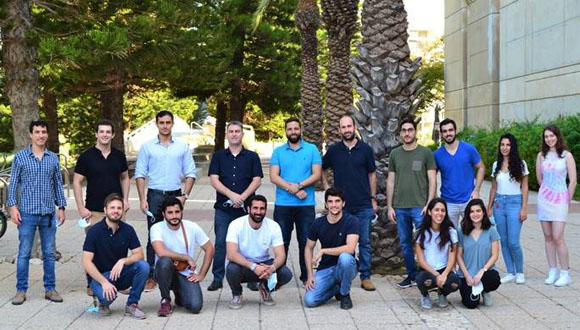
SAIL-IL Team members
The Event Details
We will also be sharing highlights from the event on our Instagram profile – follow the hashtag #tau_sail.
The schedule for the event:
11:00 – 11:30 – Gathering
11:30 – 12:30 – First sea trial
12:30 – 13:00 – Preparations for second sea trial
13:00-14:00 – Second sea trial
Featured image: SAIL-IL Team members preparing the boat before its sea trial
A Healthier Alternative to Antibiotics
New study proves biological treatment can be a suitable alternative to antibiotics.
In a groundbreaking new study led by Dr. Natalia Freund and doctoral candidate Avia Watson at the TAU Sackler Faculty of Medicine, researchers were able to develop a “biological antibiotic” and demonstrates that human antibodies can offer an alternative to the traditional chemical antibiotics. The study was conducted in collaboration with laboratories in the United States and China and published in the prestigious scientific journal Nature Communications.
During the past century, antibiotics have served as the main treatment against bacteria, being both efficient and cheap. Antibiotics are chemical agents, designed to block and destroy specific cells, such as microbial cells. However, since some biological mechanisms are common to both human and microbial cells, the range of antibiotics that can safely be used without harming the patient is limited. For example, cell wall components of many strains of microbes are common to human cells; therefore, any damage caused to the microbial cell walls can lead to extensive damage to body systems. Furthermore, in recent years the number of microbial strains that are resistant to existing antibiotics has grown, which presents new challenges of defending the body from microbes in the post-antibiotic era.
For these reasons, Dr. Natalia Freund and her laboratory team have spent the recent years searching for a biological alternative to known antibiotics. Dr. Freund explains, “Advances in biological medicine have enabled us to rout the germs in new ways that are not based solely on antibiotics, allowing for a solution to the challenge posed by resistant germs. Our study is an initial proof of the concept of employing monoclonal antibodies (derived from single cells) as an effective therapy for combating bacterial pathogens”. Antibodies are proteins that are produced naturally by our immune response following infection or a vaccine. They harbor many advantages such as specificity, stability and safety. This is why antibodies are today in widespread use in the clinic for treatment of cancer, autoimmune diseases and viral infections such as COVID-19.
Tuberculosis as Test Case
The research team chose Tuberculosis, which is caused by infection of the bacilli Mycobacterium tuberculosis, as a test case and were able, for the first time ever, to create an effective treatment based on anti-bacterial antibodies that developed naturally during infection (the antibodies were extracted from a patient who had been infected, and has since recovered, from tuberculosis). Another reason for the choice of tuberculosis is that although the vaccine against tuberculosis was developed 100 years ago (and is based on the attenuated bacillus bovis (BCG) strain), it is not effective for adults and does not prevent infection. In addition, in recent years, more and more strains of disease have developed that are resistant to the only treatment currently available: treatment with antibiotics. Since tuberculosis bacteria are highly contagious and are transmitted through the air and damaging to the lungs, the spread of untreated resistant strains of tuberculosis constitutes a real hazard. Today, about a quarter of the world’s population is infected with tuberculosis, with the rates of drug-resistant strains peaking as high as 40% in some countries. In Israel, there are about 200 active tuberculosis cases every year.
Dr. Natalia Freund and her research team
Future Targets: Pneumonia and Staphylococcal Infections
Due to the size and complexity of the tuberculosis bacillus, previous efforts to isolate monoclonal antibodies against it have been futile. The researchers in Dr. Freund’s laboratory have succeeded in isolating two types of antibodies which contributed to a 50% reduction of the bacterial levels in mice relative to other mice that were not treated with antibodies. These antibodies have been found to be effective against three different strains of the tuberculosis bacterium and are expected to be effective also against additional strains that have not yet been investigated, including strains that are resistant to antibiotics
Following the success of the study, Dr. Freund’s laboratory is currently exploring the possibility of extending the “biological” substitute for antibiotics to include other diseases. “The demonstrated case for this study will enable us to expand on our future work to include diseases such as pneumonia and staphylococcal infections,” says Dr. Freund.
Israel’s Premier Artificial Intelligence Event is Back!
TAU’s AI Week brings together top Israeli and global experts in the field for three fascinating days, Feb 22-24.
It is time for TAU’s annual International Conference on Artificial Intelligence (AI), continuing our tradition of gathering prominent figures who address the most significant issues in the field with technology experts, industry executives, and government representatives.
Combining technological leadership, applied AI and cutting-edge research, AI Week will highlight the way in which AI technology is revolutionizing business strategy, policy and future development. Discussions will focus on formulating national plans for the advancement of AI, the use of AI in medicine and implementing AI to advance the economy in a post corona world.
Speakers include: Prof. Isaac Ben Israel (Head of the Yuval Ne’eman Workshop on Science, Technology and Security, Head of the Cyber Center at Tel Aviv University), Sumaya AlHajeri (Head of Governance and Data at the Office of the Minister of Artificial Intelligence, UAE), Sana Khareghani (Head of UK Office for Artificial Intelligence), Carme Artigas (Secretary of State for Digitalization and Artificial Intelligence, Spain), Dr. Eviatar Matania (Former Director General, Israel National Cyber Directorate) and more.
The conference program can be viewed here.
Participation is free of charge, but requires registration in advance. Please register here.
Children with Autism during Lockdown: Serious Implications for Behavior and Development
A new TAU study examines the difficulties experienced by children with different levels of autism and their parents during Israel’s first lockdown during the coronavirus crisis (in the spring of 2020). The data shows that the drastic changes in the children’s routines and their prolonged stay in their homes instead of their special education had serious implications for the behavior and development of the children and impacted their parent’s ability to support them
The study was led by Dr. Itay Tokatly-Latzer, Prof. Orit Karnieli-Miller and Prof. Yael Leitner from the TAU Sackler Faculty of Medicine, in collaboration with the Tel-Aviv Sourasky Medical Center, and was published in the academic journal ‘Autism’.
Lack of Routine Caused Regression
The study group consisted of the parents of 25 children with autism who shared the difficulties they faced during lockdown with the researchers in real time. Some children would for instance refuse to go to sleep at night – screaming and restless, they would stay awake all through the night. Others experienced behavioral regression, returning to repetitive and stereotypical movements that had initially improved.
At the same time, however, the researchers note that there were families who experienced it differently and who found creative ways to help their children get through the crisis in a positive way: One couple chose to go along with the particular interests of their child, engaging in repetitive cake baking. The parents of another child who needed to be in constant movement, bought their son a trampoline so that he could spend his excess energy inside their home.
Support and Guidance Programs for Parents of Children with Autism
Prof. Karnieli-Miller: “Lockdowns are difficult for all of us, but all the more so for families with autistic children. For these children, even the slightest change of routine can cause harm and throw them off balance. The study showed that in many instances the parents were left helpless as they did not have the tools and the professional knowledge required to deal with the situation. The parents need to be given the tools, support and guidance in order to deal with this huge challenge and enable them to create a ‘flexible routine’ for their children.
“The findings of the study show that during periods of lockdowns the State must do whatever it takes to prevent the closing down of special education, in order to prevent causing harm to children with special needs. If the State nevertheless decides that such steps be taken, it must immediately implement assistance and guidance programs for parents of children with autism. The parents need to receive professional help and better tools for caring for their children.”
Ready for Launch!
TAU’s first nanosatellite ready to be launched into space.
Watch it Launch
The moment we’ve all been waiting for is now only days away: TAU’s first nanosatellite, TAU SAT1 is about to be launched into space. This exciting journey has been followed closely by many on the university’s social media, and we are happy to share that the launch itself can be watched live on Facebook on February 20 at 7:36 PM.
The development of TAU-SAT1 has been followed by many on the university’s social media
Small Satellite – a Big Step
“This is a nanosatellite, or miniature satellite, of the ‘CubeSat’ variety,” explains Dr. Ofer Amrani, head of Tel Aviv University’s miniature satellite lab. “The satellite’s dimensions are 10 by 10 by 30 cm, the size of a shoebox. It weighs less than 2.5 kg. TAU-SAT1 is the first nanosatellite designed, built and tested independently in academia in Israel.”
The nanosatellite was devised, developed, assembled, and tested at the new Nanosatellite Center, an interdisciplinary endeavor of The Iby and Aladar Fleischman Faculty of Engineering, Raymond & Beverly Sackler Faculty of Exact Sciences and the Porter School of the Environment and Earth Sciences. The entire process has taken two years – an achievement that would not have been possible without the involvement of many people: the university administration, who supported the project and the setting up of the infrastructure on campus, Prof. Yossi Rosenwaks, Dean of the Faculty of Engineering; Professors Sivan Toledo and Haim Suchowski from the Raymond & Beverly Sackler Faculty of Exact Sciences; Prof. Colin Price, researcher and lecturer in Athmospheric Sciences in the School of Geosciences and Head of the Porter School of the Environment and Earth Sciences, and, most importantly, the project team that dealt with R&D around the clock: Elad Sagi, Dolev Bashi, Tomer Nahum, Idan Finkelstein, Dr. Diana Laufer, Eitan Shlisel, Eran Levin, David Greenberg, Sharon Mishal, and Orly Blumberg.
Space Weather
TAU-SAT1 is a research satellite and will be conducting several experiments while in orbit. Among other things, it will measure cosmic radiation in space. “We know that that there are high-energy particles moving through space that originate from cosmic radiation,” says Dr. Meir Ariel, director of the university’s Nanosatellite Center. “Our scientific task is to monitor this radiation, and to measure the flux of these particles and their products. Space is a hostile environment, not only for humans but also for electronic systems. When these particles hit astronauts or electronic equipment in space, they can cause significant damage. The scientific information collected by our satellite will make it possible to design means of protection for astronauts and space systems. To this end, we incorporated several experiments into the satellite, which were developed by the Space Environment Department at the Soreq Nuclear Research Center.”
Like the weather on Earth, there is also weather in Space. This weather is linked to storms that occur on the surface of our Sun, and impact the environment around the Earth. Prof. Colin Price researches and lectures in Atmospheric Sciences and explains that “When there are storms on the Sun, highly energetic particles are fired at the Earth at speeds of hundreds of kilometers per second, and when these energetic particles hit the Earth’s atmosphere, they can cause lots of damage to satellites, spacecraft and even astronauts.” TAUSAT1 will be studying these storms and their impact on the atmosphere at the height of 400km above the Earth, testing the damage produced by the tiny particles. This will help understand the hostile environment satellite face due to space weather.
WATCH: TAU’s Nanosatellite Project
Satellite Station on Roof of Faculty Building
At an altitude of 400 km above sea level, the nanosatellite will orbit the earth at a dizzying speed of 27,600 km per hour, or 7.6 km per second. At this speed, the satellite will complete an orbit around the Earth every 90 minutes. “In order to collect data, we built a satellite station on the roof of the engineering building,” says Dr. Amrani. “Our station, which also serves as an amateur radio station, includes a number of antennas and an automated control system. When TAU-SAT1 passes ‘over’ the State of Israel, that is, within a few thousand kilometer radius from the ground station’s receiving range, the antennas will track the satellite’s orbit and a process of data transmission will occur between the satellite and the station. Such transmissions will take place about four times a day, with each one lasting less than 10 minutes. In addition to its scientific mission, the satellite will also serve as a space relay station for amateur radio communities around the world. In total, the satellite is expected to be active for several months, after which it will burn up in the atmosphere and return to the Earth as stardust.
TAU Joins ‘New Space’ Revolution
Launching the TAU-SAT1 nanosatellite marks TAU’s first step of joining the ‘new space’ revolution, aiming to open space up to civilians as well. The idea is that any researcher or student, from any faculty at Tel Aviv University, or outside of it, will be able to plan and launch experiments into space in the future – even without being an expert in the field.
Over the last few years, TAU has been working on establishing a Nanosatellite Center to build small “shoebox” size satellites for launch into space. “We are seeing a revolution in the field of civilian space”, explains Prof. Colin Price, one of the academic heads of the new center. “We call this ‘new space’, as opposed to the ‘old space’, where only giant companies with huge budgets and large teams of engineers could build satellites.
After undergoing pre-flight testing at the Japanese space agency JAXA, TAU-SAT1 was sent to the United States, where it “hitched a ride” on a NASA and Northrop Grumman resupply spacecraft destined for the International Space Station. At the station, this upcoming Saturday evening, a robotic arm will release TAU-SAT1 into a low-earth orbit (LEO) around the Earth, approximately 400km above the Earth.
Last inspections in the clean room. TAU SAT1

